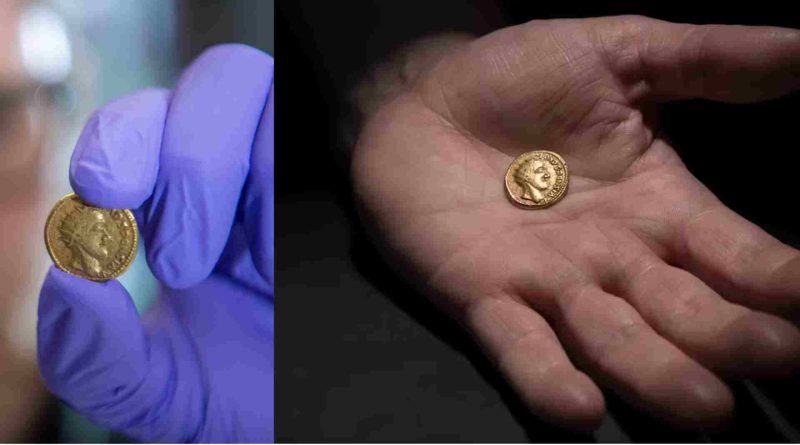Controversy Surrounding Authenticity of Roman Coins May Redefine the Legacy of an Allegedly ‘False’ Emperor
In a captivating twist, scientists claim to have validated the authenticity of several Roman coins, potentially overturning the dismissal of an emperor deemed fake. However, not all voices align on this matter.
Researchers based in the United Kingdom assert the legitimacy of several Roman coins previously labeled as counterfeit, challenging the notion that an emperor once dismissed as fictitious might indeed have ruled.
Among the coins discovered in a hoard allegedly unearthed in Transylvania, Romania, in 1713, one bears the portrait and name of the Roman emperor Sponsian, as per a study released in the journal PLOS ONE on Wednesday.
However, historical archives lack evidence supporting the existence of a Roman emperor named Sponsian, as highlighted in a press release. Moreover, during that era, “Sponsian” was not recognized as a name within ancient Rome.
These coins’ crafting and style, marked by perplexing inscriptions, deviated from the typical style of authentic mid-3rd century Roman coins, according to the study, leading to their dismissal as substandard counterfeits.
Now, scholars from University College London (UCL) and the University of Glasgow in the UK claim to have identified authenticity indicators.
By utilizing powerful microscopes in visible and ultraviolet light, along with scanning electron microscopy and spectroscopy—examining light absorption or reflection across different wavelengths—they scrutinized the coins.
Their analysis encompassed four coins from the 1713 hoard, one bearing the likeness of Sponsian. All four are currently exhibited at The Hunterian, University of Glasgow.
Distinct patterns of wear and tear detected on the Sponsian coin suggest it circulated actively. Additionally, researchers found traces of earth deposits, indicating prolonged burial in soil before excavation and exposure to air.
Lead study author Paul N. Pearson, a professorial research associate at UCL’s Earth Sciences department, stated in the press release, “Scientific analysis of these exceedingly rare coins elevates Emperor Sponsian from obscurity.”
“Our findings suggest his reign over Roman Dacia, a secluded gold mining enclave, during a tumultuous period of civil unrest and incursions along the borders,” Pearson added.
Dominion Over Dacia
Dacia, isolated from the rest of the Roman Empire circa 260 AD, boasted rich gold mines and mineral wealth, per UCL.
While Sponsian never commanded an official mint or governed Rome, the researchers propose he possibly assumed the role of a local commander-in-chief during chaotic times to safeguard Dacia’s populace.
The Sponsian coin series likely served as payment for senior soldiers and officials, who preserved them as a form of wealth, the researchers suggest.
Based on their findings, “Sponsian’s historical standing appears worthy of reassessment,” concluded the study.
The researchers acknowledge that while certainty about him remains elusive, the coins analyzed offer insights into his potential historical significance.
‘Debate Is Ongoing’
Nevertheless, not everyone is swayed by these revelations.
Despite the study’s assertions, some experts, particularly in numismatics—the study or collection of currency—maintain skepticism regarding the coin’s authenticity.
Jerome Mairat, curator of the Heberden Coin Room at the Ashmolean Museum in Oxford, England, told CNN, “Like many in the numismatic community, I firmly believe this coin to be a modern forgery.”
He added, “The notion that this coin is genuine lacks scientific basis and evidence.”
Dame Mary Beard, renowned scholar of Ancient Rome and classics professor at Cambridge University, echoed skepticism in a blog post for the Times Literary Supplement, pointing out several concerns regarding their craftsmanship and design.
Nonetheless, Pearson remains steadfast, asserting that the research team has reached a definitive conclusion regarding the coins’ authenticity. He expressed eagerness to engage with Roman historians and archaeologists to test their hypothesis about Sponsian.
“For the broader narrative of Roman history, Sponsian may be a footnote, but a footnote deserving reinstatement,” Pearson emphasized. He stressed the importance of these findings for comprehending the decline of Roman authority in Dacia and Romania’s history, signaling the beginning of academic discourse on the matter.

